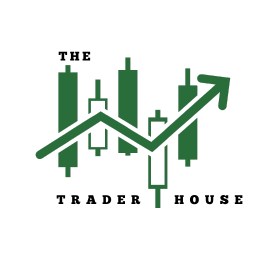
How To Find Opportunities in USA’s $29 Trillion Economy
Have you ever wondered how big the U.S. economy really is? It’s massive! In 2024, it is valued at $29 trillion. That’s a number so big, it’s hard to picture! Today, I want to help you understand how this massive economy is spread out across different states and industries. By knowing this information, you will be able to think more like a trader and make better decisions in the stock market.
Understanding State Contributions
From California to Texas, each state plays its own unique role in the U.S. economy. California stands out as a giant, leading in industries like technology, entertainment, and agriculture. On the flip side, there are smaller states with economies that rely heavily on just one or two industries. For example, Vermont’s economy is mainly based on tourism and agriculture.
As a newbie to the financial markets, you need to pay attention to these contributions because they often influence company stocks. If a state’s economy is booming, the companies based there might do well, and this can affect their stock prices.
Economic Powerhouses
Let’s go a little deeper into some of the key players. Texas is another powerhouse that plays a huge role in the U.S. economy. It is known for its oil, technology, and agriculture. Companies like ExxonMobil are based in Texas and when you see news about oil prices, it can affect stocks in this state significantly.
Understanding these economic powerhouses can help you make informed trading choices. If California’s tech industry is thriving, think about how that could affect stocks of big tech companies like Apple and Google. Pay attention to news especially legal news about these states; it might offer clues about how certain stocks will move.
Finding Growth Areas
Each state has its strengths, but some are more promising for future growth. For example, states like Florida and North Carolina are seeing fast growth in their economies, thanks to industries like tourism and manufacturing. When states grow economically, they often attract new businesses and investment.
If you hear about a state expanding its infrastructure or a new company opening in town, this can be a great sign for jobs, housing and retail! As a trader, looking for companies in these states might give you extra advantages.
Linking to National Trends
By studying how the economy works at a state level, you can see connections to broader national trends. If unemployment is down in a state, it often means companies are hiring more. This can lead to an increase in stock prices for businesses operating there because demand is growing.
When news breaks about economic growth, don’t just think of it as a piece of news; consider what it means for the stock market. This way, you can possibly get ahead on your plays.
Getting Informed
Reading articles like the one from Visual Capitalist and Investopedia are fantastic for brushing up on trading terms and learning different strategies.
Keeping Up with News
The news is a treasure trove of information. Stocks can react swiftly to economic reports. If you hear about a new factory opening in a state or legislation that helps businesses, connect the dots. How does this news affect stock prices?
It’s important to stay updated, but it can feel overwhelming at times. Focus on the main industries thriving in each state and how they might impact trading opportunities.
If you haven’t already, please subscribe to our email list so you can receive updates and tips for beginners like you. You can also connect with us on our social media platforms:
And for those of you wanting to quicken your learning process in trading, consider our trading course. It’s designed to help you learn strategies that work in today’s market. Ready to become a more confident trader?
In conclusion, knowing the breakdown of the U.S. economy by state and industry empowers you as a trader. By being informed about economic strength in different regions, you will gain insights that could influence your trading decisions. Make sure to stay curious and keep following the news for the latest updates!
For further details and a rich visual experience, check out the article on Visual Capitalist: Source.








